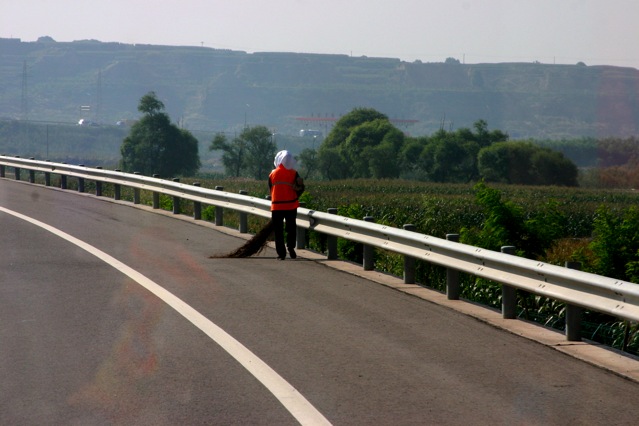
Lanzhou to Xiahe



Monday 14 August - Tuesday 15 August: To and from Lanzhou
Lanzhou meant a switch from humid heat and overcast skies to sunny heat with a clear sky, not a bad trade. Otherwise the place was pretty polluted (No. 1 in China!) and noisy.
This may be the point to speculate on Chinese traffic behavior. Given the cut-throat driving style (worse than Paris) it is amazing hardly any car has dents.
A possible explanation is that Chinese drivers use both visual and auditory scenes.
Basically any car in any traffic situation honks. Multiple times. Using the sounds, other drivers can make both a visual and an auditory representation of their environment. 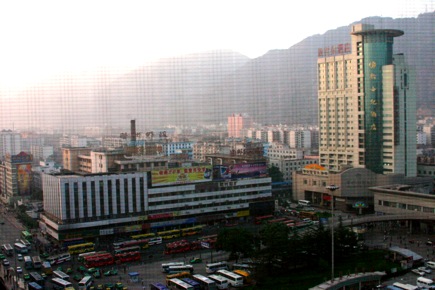

The price for this additional piece of safety, which of course could also be obtained by driving more politely, is a continuous noise all the way through the night. With open windows in Lanzhou to get some air, sleeping wasn’t made easy by the blanket of car horns.
We left Lanzhou early in the morning, and it felt our trip had finally begun. We drove in a bus painted with blue and fish through a very interesting area - dry and red, but very cultivated, formed into terraces all the way to the top of the hills.
Here, corn and other grains are grown. people in straw hats go about working almost leisurely. because of the terraces, the landscape looks extremely harmonious.
Behind the cultivated hills, fissures of mountains shimmer through the mist (pollution?). Shades of the Himalayas!
We climb higher, our ears clog up, the air turns fresh. We leave the windows of our bus wide open and eat peaches and bananas and “drop” (Dutch liquorice) against our ears’ shutting down.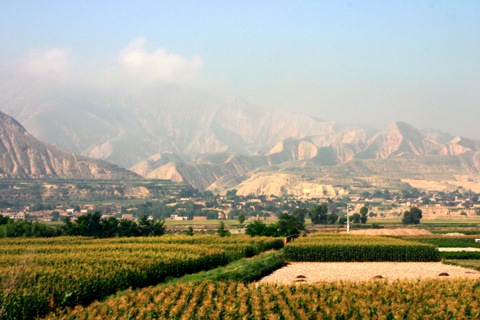

Between the modern city Beijing, its pale brother Lanzhou, and the buddhist part of China we’re headed for, we pass through a Muslim area, where men wear a Fez and women a veil (green = unmarried or married less than five years, black = married, white = widowed). For the first time, we are eyed with curiosity as we visit a small market - people look at us shyly, then they come and look at the bus. Most everyone knows the “western greeting”: “Hello,” and uses it freely. The weather is warm but crisp. We feel light years away from Beijing.
Islam is not something you would expect in China, but there is a large area from Lanzhou southwards that is almost exclusively Muslim. These people ended up here at the time of the silk route and have remained ever since. So suddenly everyone is wearing a white Fez or a veil, the men sport beards and funny sunglasses. At one of the villages on the way we were as much an attraction as the people who posed for us. 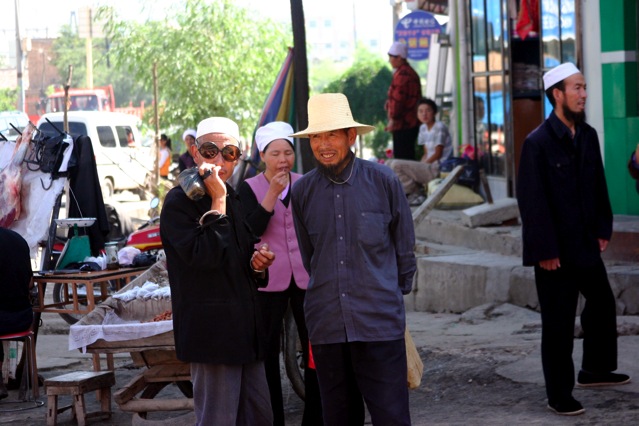

At another stop (Linxia) we had noodle soup, the local specialty, and very interesting “Eight Treasures” tea with all kinds of mysterious items in it at least one of which was a dried lychee. It allowed for infinite refills of hot water.
The main attraction was a stop at a mosque, mainly populated by boys who were very eager to be photographed, after which they could look at themselves at the tiny 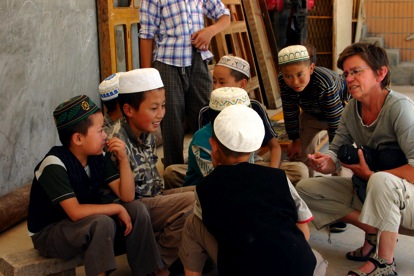 displays of the digital cameras.
displays of the digital cameras.
 displays of the digital cameras.
displays of the digital cameras. Later on, a few of our group showed them the “head, shoulders, knees, and toes” dance to their great delight. They followed along, touching their respective body parts or breaking down laughing about us bizarre visitors.
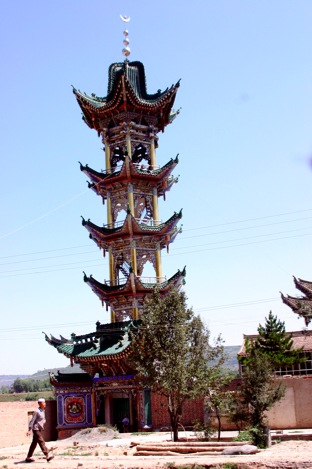
The minaret, which we could climb, was an interesting combination of Chinese and Muslim building style, like a big stack of little chinese-style pagodas.
Still further down the road was the demarcation between Buddhism and Islam: A large arch over the road flanked by a stupa. This was the border with Amdo, a former Tibetan province that was captured by China before the rest of Tibet.
The sun is high in the sky, it is hot, the altitude makes itself known. A beautiful white gate announces the white stupa, a simple structure guarded by four lions drowning under white scarves left there as offerings for protection and good luck. We walk three rounds around the stupa, blown away by the foreignness of the place and its realness.
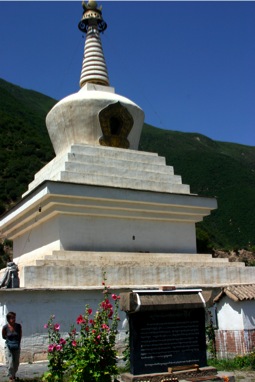
We make our way to Xiahe with the biggest buddhist monastery outside of Tibet (Labrang monastery). The landscape is very beautiful: Rolling hills, still green, the sun molding their shape. The humid horror/ rainstorm torrent that was Beijing seems far away, as does our tacky hotel, and the mindcrushingly unimaginative architecture of Tianamen Sq. et al., the taxis, the high rises.
